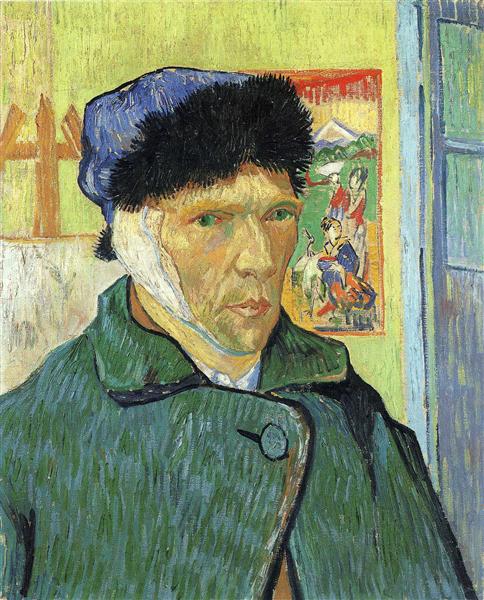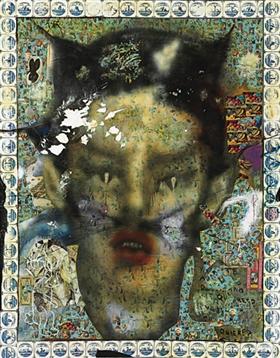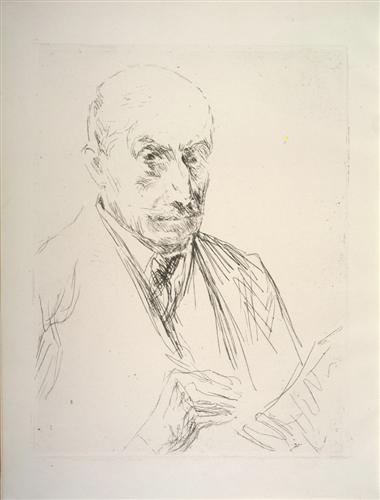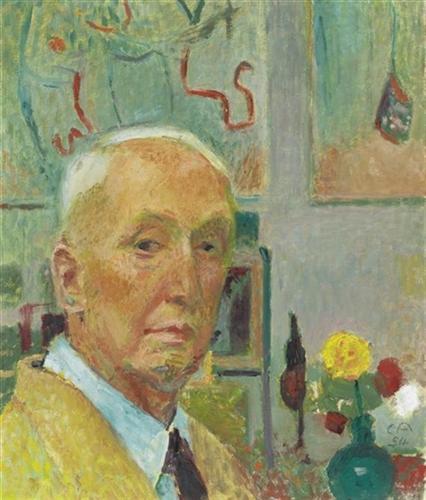
图片尺寸:2356 × 2861 像素
作品名称:Self Portrait with Bandaged Ear
创作者:文森特·梵高 Vincent van Gogh
创作年代:1889
风格:后印象派
体裁:自画像
材质:布面油画
现位于:Courtauld Institute of Art, London, UK
实际尺寸:60 x 49 cm
版权信息: Public Domain(公有领域)
无水印高清图下载
图片尺寸:2356 × 2861 像素
图片大小:8.56 MB
图片格式:JPG
下载方式:百度网盘
下载地址:

在巴黎期间,他创作了从第一幅 《戴黑色毛毡帽的自画像》到1888年初的《画架前的自骊像》共八幅自画像。1888年2月,梵高在朋友的推荐下来到法国南部小城—阿尔,从而迎来了他创作的高峰期,这一期间《自画像—献给高更》和《包扎耳朵的自画像》等三幅自画像诞生。1889年在来到雷米尔后他又创作了最后的三幅自画像。
1888年梵高邀请高更来阿尔同住,起初他们相处愉快,但随着梵高病情反复,两个的艺术家却是不断的争吵。在一场剧烈争执后,高更大怒而去,梵高无法阻止,亦无法抑制自己的激动,竟割下自己的耳朵。
This famous painting, Self-Portrait with Bandaged Ear by Vincent van Gogh, expresses his artistic power and personal struggles. Van Gogh painted it in January 1889, a week after leaving hospital. He had received treatment there after cutting off most of his left ear (shown here as the bandaged right ear because he painted himself in a mirror). This self-mutilation was a desperate act committed a few weeks earlier, following a heated argument with his fellow painter Paul Gauguin who had come to stay with him in Arles, in the south of France. Van Gogh returned from hospital to find Gauguin gone and with him, the dream of setting up a ‘studio of the south’, where like-minded artists could share ideas and work side by side.
The fur cap Van Gogh wears in this painting is a reminder of the harsh working conditions he faced in January 1889: the hat was a recent purchase to secure his thick bandage in place and to ward off the winter cold. This self-portrait is thus powerful proof of Van Gogh’s determination to continue painting. It is reinforced by the objects behind him, which take on a symbolic meaning: a canvas on an easel, just begun, and a Japanese print, an important source of inspiration. Above all, it is Van Gogh’s powerful handling of colour and brushwork that declare his ambition as a painter.
机器翻译:文森特-凡高的这幅名画《包扎耳朵的自画像》表达了他的艺术力量和个人斗争。梵高是在1889年1月,离开医院一周后画的。他在那里接受了治疗,因为他割掉了大部分的左耳(这里显示的是包扎的右耳,因为他在镜子里画了自己)。这种自残行为是几周前与来法国南部阿尔与他同住的画家保罗-高更发生激烈争吵后的绝望之举。梵高从医院回来后发现高更走了,随之而来的是建立一个“南方工作室”的梦想,在那里志同道合的艺术家们可以分享想法并并肩工作。
梵高在这幅画中戴的毛皮帽提醒人们他在1889年1月面临的恶劣工作条件:这顶帽子是最近买的,用来固定他厚厚的绷带和抵御冬天的寒冷。因此,这幅自画像有力地证明了梵高继续绘画的决心。他身后的物品更加强了这一点,它们具有象征性的意义:画架上的画布,刚刚开始,还有一幅日本印刷品,是灵感的重要来源。最重要的是,凡高对色彩和笔触的有力处理,宣告了他作为一个画家的雄心。




